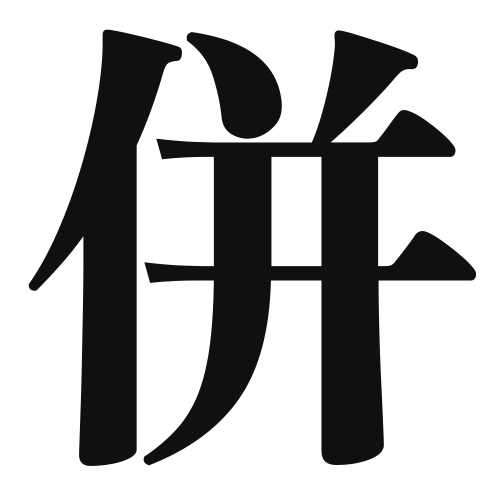1. Overview of Meaning
The kanji “併” (pronounced “hei” or “byou”) generally means “to combine” or “to merge.” It conveys the idea of bringing together two or more elements into one.
2. Formation and Radical
Formation of the Kanji: The kanji “併” is a compound character (会意文字) that combines the elements of “人” (person) and “並” (to line up or to be equal). This suggests the idea of people coming together or being combined.
Radical: The radical for “併” is “亻” (the person radical), which indicates that the character is related to people or human actions.
3. Examples of Usage
Common Words and Phrases: Some frequently used words that include “併” are “併合” (heigou – merger) and “併用” (heiyou – combined use).
Example Sentences in Daily Conversation:
- この二つの会社は来月併合します。 (Kono futatsu no kaisha wa raigetsu heigou shimasu.) – These two companies will merge next month.
- このアプリは併用することができます。 (Kono apuri wa heiyou suru koto ga dekimasu.) – This app can be used in combination with others.
4. Synonyms and Antonyms
Similar Kanji: A similar kanji is “合” (gou), which also means “to combine” but is more general and can refer to various types of combinations, not necessarily involving people.
Opposite Kanji: An antonym is “分” (bun), which means “to divide” or “to separate,” indicating the opposite action of combining.
5. Cultural and Historical Background
Relation to Japanese Culture: The concept of merging or combining is significant in Japanese culture, especially in business and community settings, where collaboration is often emphasized.
Proverbs and Idioms: One relevant proverb is “二人三脚” (futari sankyaku), which means “two people, three legs,” symbolizing cooperation and teamwork, akin to the idea of “併” in bringing together efforts.
